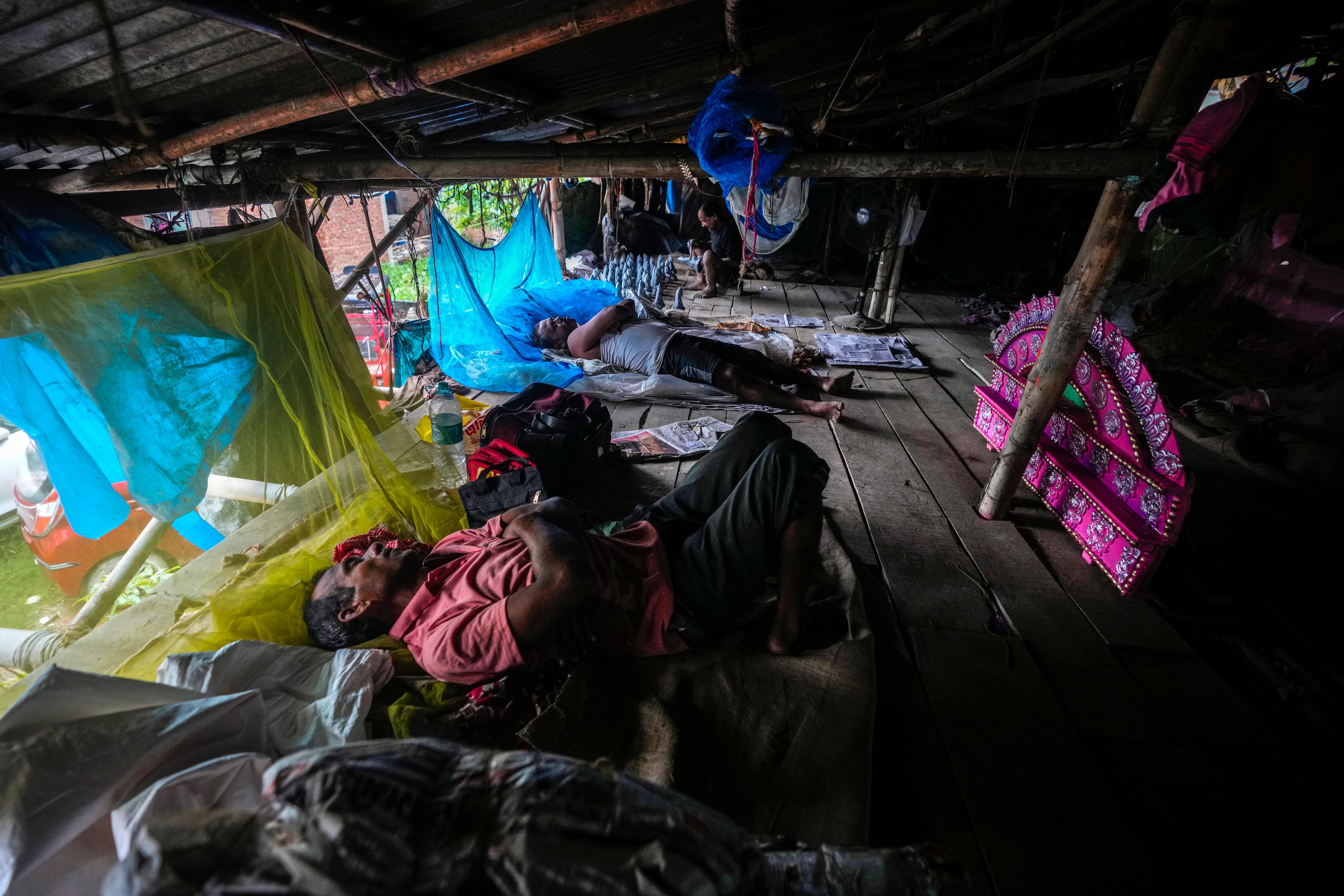AP PHOTOS: Artisans in India’s Assam state make colorful mud idols of Hindu gods for Durga Puja
GUWAHATI, India (AP) — Kanchan Paul is deep in concentration as he paints the right eye on a clay idol of the Hindu goddess Durga. He stands on a plastic stool and leans in toward the 8-foot-tall figure. It is delicate work, requiring him to remain eye-to-eye with the goddess for long periods of time.
GUWAHATI, India (AP) — Kanchan Paul is deep in concentration as he paints the right eye on a clay idol of the Hindu goddess Durga. He stands on a plastic stool and leans in toward the 8-foot-tall figure. It is delicate work, requiring him to remain eye-to-eye with the goddess for long periods of time.
He describes the experience as “having a direct connection with the goddess ... It can also be very frightening at times, when you feel her gaze upon you."
Kanchan, 39, is the fourth generation in his family to build clay idols. His 70-year-old father, Ratan Paul, who is working inside, has been making idols since 1975.
Their narrow workshop is located in an urban area on the outskirts of Guwahati, the capital of the northeastern Indian state of Assam, and the idols are being prepared for Durga Puja, a festival celebrating the victory of good over evil.
The idol that Kanchan is painting depicts Goddess Durga with 10 arms. She stands with her left foot on a muscular man and her right on a lion, her mount, which crushes a bull beneath its paws. The human and bull represent different forms of the shapeshifting demon Mahishasura and the tableau records his slaying by the goddess.
Ratan has lit a fire on a metal tray inside the workshop to dry the idols. The figures are usually sun-dried but the rains this season have made that more difficult and Ratan has resorted to using wood fires and blowtorches to get the idols ready on time.
The idols are constructed using traditional techniques. An effigy of bamboo strips and hay is erected first on which the form of the idol is fleshed out with a paste of mud mixed with jute fibers. Some parts, such as the head, hands and feet, are hand-molded separately and attached to the core when the mud is still wet. When the features are in place and the idol is dried, colors are applied by experienced artisans.
Similar workshops around the city are busy trying to fulfill orders for the 10-day festival. Idols coming out of different workshops vary in their features and styles. Goddess Durga may be depicted having more or fewer arms, with a tiger or a lion, and may be shown accompanied by other Hindu gods.
On the sixth day, devotees take smaller idols home while the larger ones are transported to community spaces. The goddess is welcomed with ritual prayers and offerings, and remains as a guest until the 10th day, when the idol is ceremonially immersed into a nearby river or another body of water.
Connect with the Southeast Missourian Newsroom:
For corrections to this story or other insights for the editor, click here. To submit a letter to the editor, click here. To learn about the Southeast Missourian’s AI Policy, click here.































